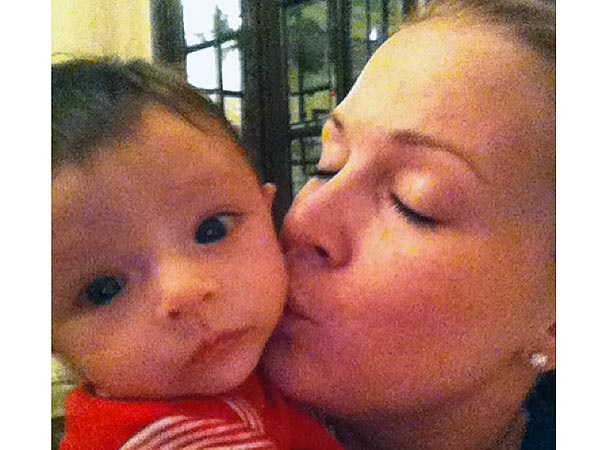
Christaan Felber for The New York Times
John Kiriakou with his daughter Kate at home in Arlington, Va., last month. He has struggled with how to explain to his children that he will be going away.
WASHINGTON — Looking back, John C. Kiriakou admits he should have known better. But when the F.B.I. called him a year ago and invited him to stop by and “help us with a case,” he did not hesitate.
Timeline
Leak-Related Cases Prosecuted During the Obama Administration
Christaan Felber for The New York Times
Mr. Kiriakou is scheduled to be sentenced to 30 months in prison as part of a plea deal.
In his years as a C.I.A. operative, after all, Mr. Kiriakou had worked closely with F.B.I. agents overseas. Just months earlier, he had reported to the bureau a recruiting attempt by someone he believed to be an Asian spy.
“Anything for the F.B.I.,” Mr. Kiriakou replied.
Only an hour into what began as a relaxed chat with the two agents — the younger one who traded Pittsburgh Steelers talk with him and the senior investigator with the droopy eye — did he begin to realize just who was the target of their investigation.
Finally, the older agent leaned in close and said, by Mr. Kiriakou’s recollection, “In the interest of full disclosure, I should tell you that right now we’re executing a search warrant at your house and seizing your electronic devices.”
On Jan. 25, Mr. Kiriakou is scheduled to be sentenced to 30 months in prison as part of a plea deal in which he admitted violating the Intelligence Identities Protection Act by e-mailing the name of a covert C.I.A. officer to a freelance reporter, who did not publish it. The law was passed in 1982, aimed at radical publications that deliberately sought to out undercover agents, exposing their secret work and endangering their lives.
In more than six decades of fraught interaction between the agency and the news media, John Kiriakou is the first current or former C.I.A. officer to be convicted of disclosing classified information to a reporter.
Mr. Kiriakou, 48, earned numerous commendations in nearly 15 years at the C.I.A., some of which were spent undercover overseas chasing Al Qaeda and other terrorist groups. He led the team in 2002 that found Abu Zubaydah, a terrorist logistics specialist for Al Qaeda, and other militants whose capture in Pakistan was hailed as a notable victory after the Sept. 11 attacks.
He got mixed reviews at the agency, which he left in 2004 for a consulting job. Some praised his skills, first as an analyst and then as an overseas operative; others considered him a loose cannon.
Mr. Kiriakou first stumbled into the public limelight by speaking out about waterboarding on television in 2007, quickly becoming a source for national security journalists, including this reporter, who turned up in Mr. Kiriakou’s indictment last year as Journalist B. When he gave the covert officer’s name to the freelancer, he said, he was simply trying to help a writer find a potential source and had no intention or expectation that the name would ever become public. In fact, it did not surface publicly until long after Mr. Kiriakou was charged.
He is remorseful, up to a point. “I should never have provided the name,” he said on Friday in the latest of a series of interviews. “I regret doing it, and I never will do it again.”
At the same time, he argues, with the backing of some former agency colleagues, that the case — one of an unprecedented string of six prosecutions under President Obama for leaking information to the news media — was unfair and ill-advised as public policy.
His supporters are an unlikely collection of old friends, former spies, left-leaning critics of the government and conservative Christian opponents of torture. Oliver Stone sent a message of encouragement, as did several professors at Liberty University, where Mr. Kiriakou has taught. They view the case as an outrage against a man who risked his life to defend the country.
Whatever his loquaciousness with journalists, they say, he neither intended to damage national security nor did so. Some see a particular injustice in the impending imprisonment of Mr. Kiriakou, who in his first 2007 appearance on ABC News defended the agency’s resort to desperate measures but also said that he had come to believe that waterboarding was torture and should no longer be used in American interrogations.
Bruce Riedel, a retired veteran C.I.A. officer who led an Afghan war review for Mr. Obama and turned down an offer to be considered for C.I.A. director in 2009, said Mr. Kiriakou, who worked for him in the 1990s, was “an exceptionally good intelligence officer” who did not deserve to go to prison.
This article has been revised to reflect the following correction:
Correction: January 5, 2013
A summary that appeared with an earlier version of this article misspelled the surname of the former C.I.A. operative. He is John C. Kiriakou, not Kiriako.











